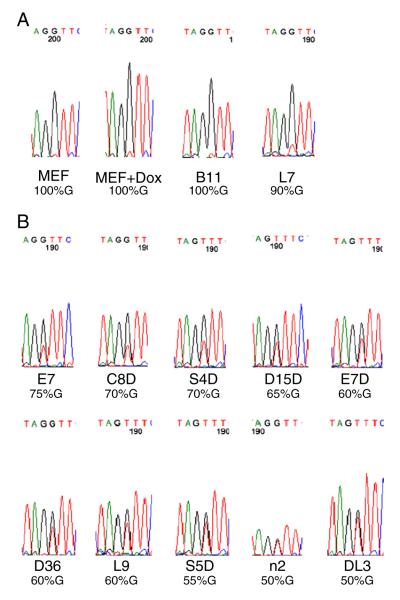Figure 6.
RT-PCR analysis of the Snrpn imprinted gene in MEF cells as well as in embryoid bodies (EBs) derived from the iPS cells. Total RNA was isolated from MEF cells and EBs derived from 12 iPS clones generated from the hybrid MEF cells. Typically, iPS clones at earlier passages (P < 5) were used for EB derivation and mature EBs were harvested between day 12 and day 16 in suspension culture for total RNA preparation. The RT-PCR product of normally paternally expressed Snrpn imprinted gene was generated from these total RNA samples and subjected to direct sequencing after agarose gel purification. A portion of the sequencing result containing the SNP of the Snrpn imprinted gene is shown for each sample, together with the part of the chromatogram that harbors the SNP. The estimated percentage of G nucleotide at the SNP underneath the chromatogram indicates the percentage of the Snrpn transcript that was transcribed from the paternal 129 allele of Snrpn in EBs of each iPS clone or in the parental hybrid MEF cells. The maternal allele of Snrpn with a DBA/2 origin has a T at the corresponding nucleotide position. A, sequencing results for the parental MEF cells as well as two iPS clones (B11 and L7) that displayed almost exclusive expression from the paternal allele of Snrpn. MEF, MEF cells. MEF + Dox, MEF cells cultured in the presence of doxycycline. B, sequencing results for ten other iPS clones that showed partial or complete bi-allelic expression of Snrpn.

